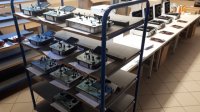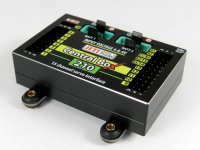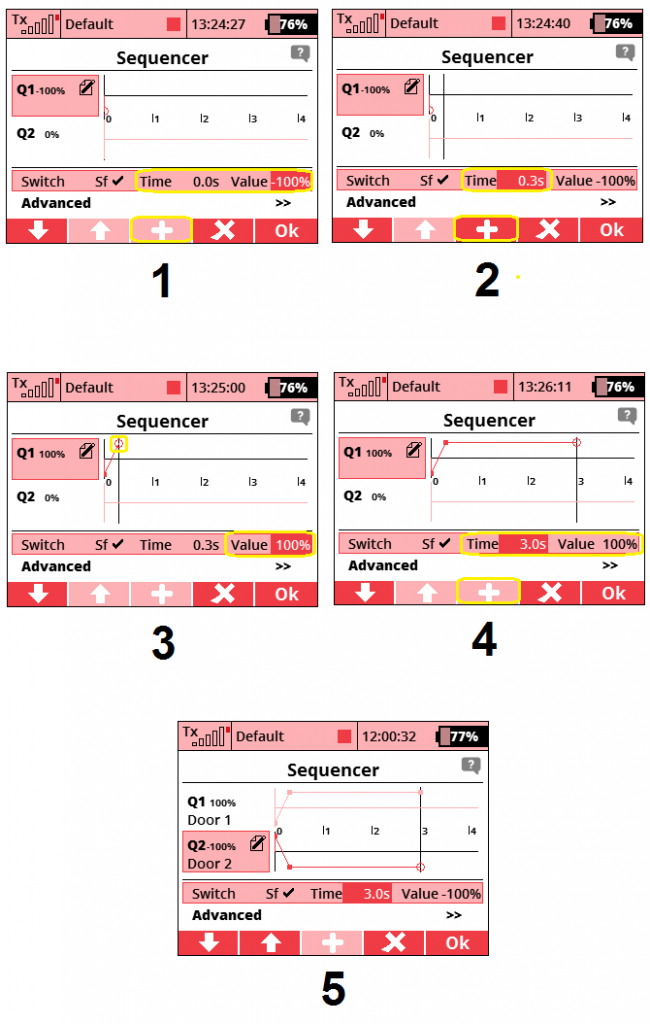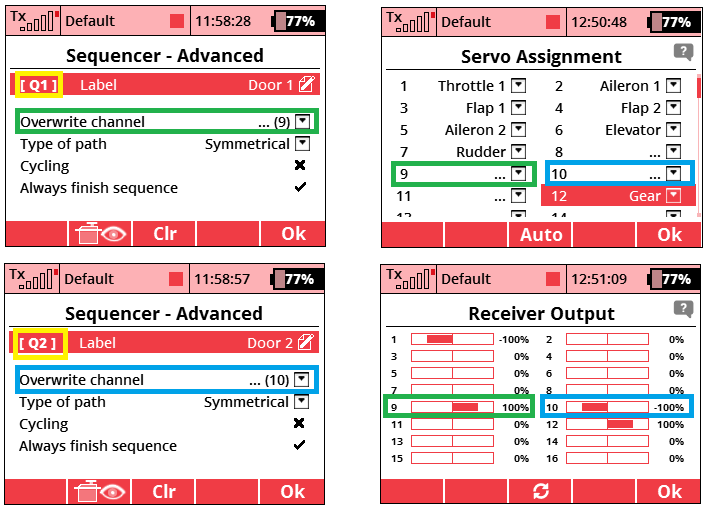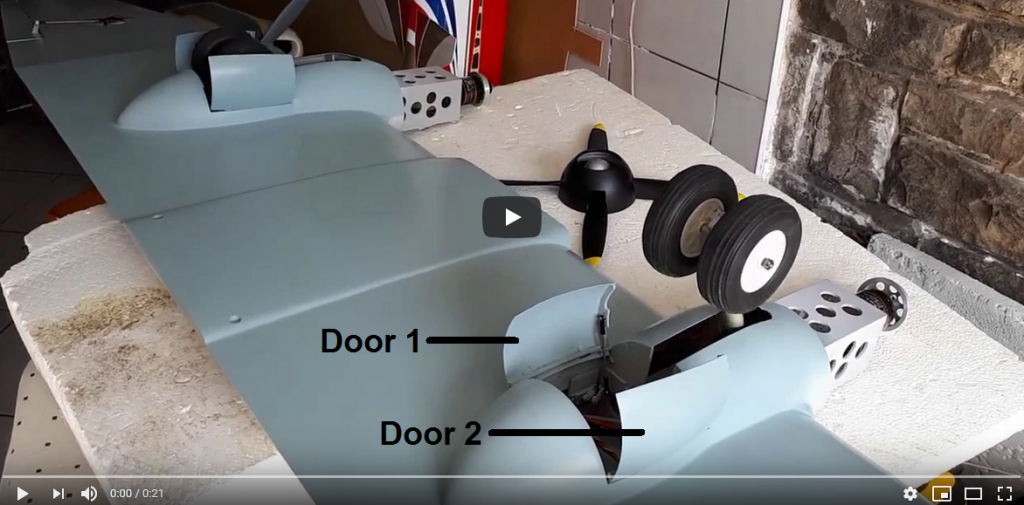The sequencer has two axes (time / servo deflection) in the figure below are markered by blue (time) and brown (servo deflection, +/- 100% full deflection and 0% center).

Settings procedure of the sequencer Q1 and Q2. To the sequencer we assign switch, ideally the same as eject/retract the main landing gears (in our example switch Sf).
Figure 1. During sequencer setup, always set TIME as the first step, add a point (+) and then set the servo deflection (value -100%). We have created the first point in time 0,0s and servo deflection -100%. Servo with deflection -100% is in our case door 1 closed.
Figure 2. Now we create the second point when the door 1 will be fully opened, so we choose TIME how long we require the door opening (slow/fast). In our case we chose 0.3s. Add a new point (+).
Figure 3. Set the servo deflection + 100% (fully open door 1) for a new point in time 0.3s.
Figure 4. Now we set the time how long we want to leave the door 1 open, when the main landing gear will go in opposite way (retract). We set the opening hold-time of 3s. During retract main gear the door 1 will wait 3s (servo deflection + 100%) and then close (servo deflection -100%).
Figure 5. In fig. 5 the servo deflection/time are created in the same way for the mirror-oriented door 2.
In the advanced settings of the sequencer Q1 and Q2 we can write the label (doors 1 and 2) and set the symmetrical type of path. This means that the sequencer for the servo uses the same curve in both directions (opening + waiting / waiting + closing). In the item "overwrite channel" select the exact output channel, where we have connected servos controlling doors 1 and 2 (channels 9 and 10).
The result of the sequencer setup is shown in the video below.






